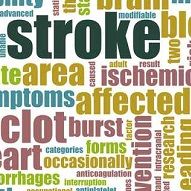Women and Minorities Under-Treated for Stroke
“Even though the treatment for stroke tPA improves recovery, some people who are eligible to receive the treatment are not getting it,†study author, Steven R. Messé, MD, explained.

Women and minorities are less likely to receive the clot busting intravenous stroke treatment tissue plasminogen activator (tPA), according to findings published in Neurology.
Researchers from the University of Pennsylvania retrospectively analyzed more than 60,000 patients over eight years with acute ischemic stroke in order to determine patient and hospital characteristics linked to not providing tPA to eligible patients in clinical practice. The patients arrived to hospital settings within two hours of experiencing stroke symptoms. The researchers also noted the patients presented no documented reasons they could not receive tPA.
A quarter of the patients did not receive tPA within three hours of arriving to the hospital, the researchers learned, but they did add that treatment rates improved as years passed. About half of the eligible patients received tPA between 2003 and 2005 compared to 82% between 2010 and 2011.
Some of the reasons for treatment failure included stroke severity, factors linked to older age, female sex, nonwhite race, diabetes mellitus, prior stroke, atrial fibrillation, prosthetic heart valve, NIH Stroke Scale score <5, arrival during off hours and not via emergency medical services, longer onset to arrival and door to CT scan times, earlier in the calendar year, and arrival at a rural, non teaching, not stroke center hospital located in the south or Midwest areas of the United States.
“Even though the treatment for stroke tPA improves recovery, some people who are eligible to receive the treatment are not getting it,” study author, Steven R. Messé, MD, explained in a press release. “We wanted to find out what factors were associated with lower likelihood of treatment, which may help us find ways to improve tPA use in the future. More research is needed about why these potential disparities exist and how they can be addressed."
Related Coverage:
Questioning Warfarin Use in Patients with End-Stage Renal Disease
Women's Risk of Stroke, and Type of Stroke, Influenced by BMI